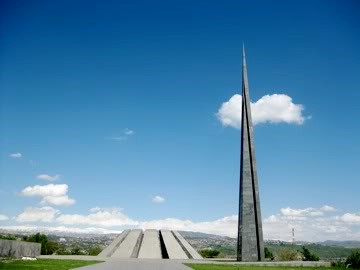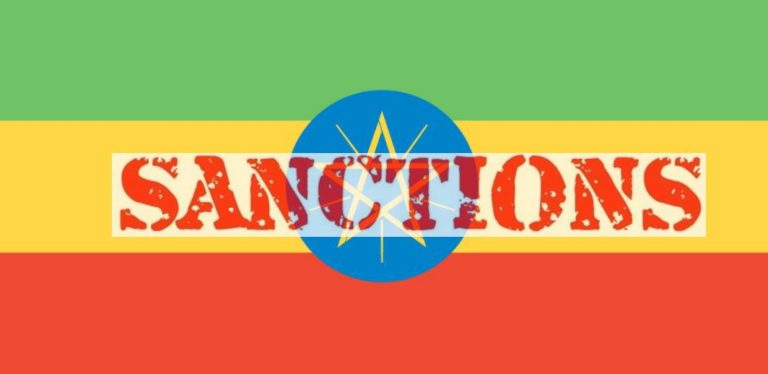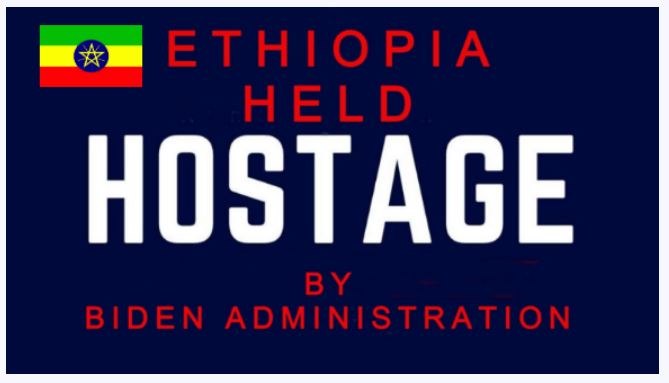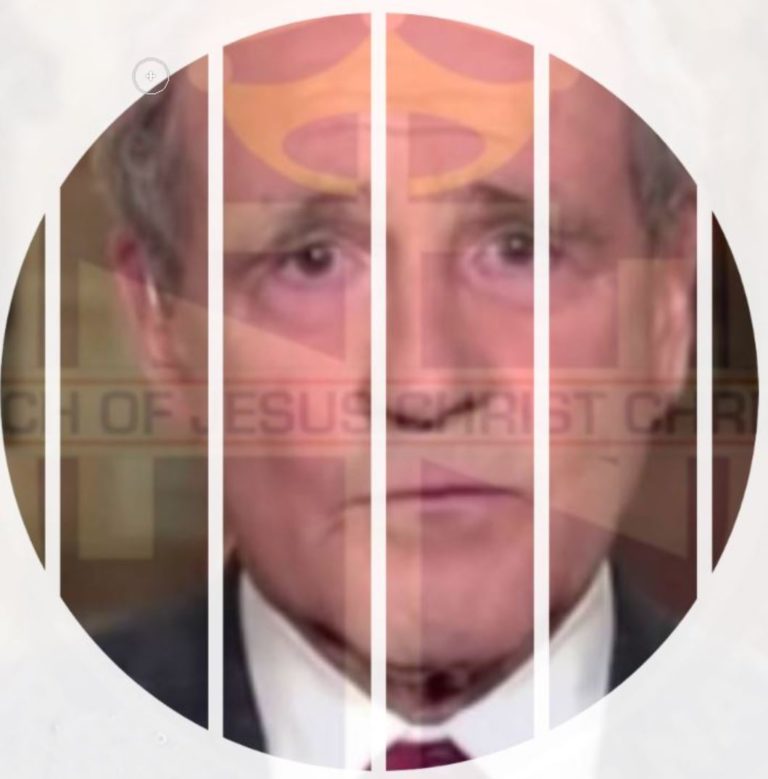Remembering the Armenian Genocide
The Armenian Genocide which began one hundred years ago this week inside present-day Turkey will be remembered worldwide on April 24. That Genocide began with a roundup of Armenian intellectuals, clergy, educators, writers, community leaders and other notable members of the Armenian community in Constantinople, (renamed Istanbul in 1923), the capital of the Ottoman Empire.
I write this commentary in remembrance of the Armenian Genocide of 1915 not because a small Armenian community has made its home in Ethiopia for well over a century. Neither am I writing because I had Ethiopian-Armenian school friends in my youth. I am also not writing because I have today friends, colleagues, students and acquaintances who are Armenian, Ethio-Armenian or of Armenian heritage.
I remember the Armenian Genocide today compelled by a simple conviction: If there had been world outrage, accountability and decisive preventive and preemptive action against the perpetrators of the Armenian Genocide, the first genocide of the 20th Century, which began on April 24, 1915 and resulted in the deaths of some 1.5 million Armenians, I believe the Rwandan Genocide which began on April 7, 1994, 79 years later to the month, and resulted in the deaths of some one million people would not have happened. Indeed, if there had been world outrage, accountability and decisive preventive and preemptive action against the perpetrators of the genocide of the Herero people of Namibia [South-West Africa, the German imperial protectorate until the end of WWI] in which tens of thousands, possibly as many as 100,000, of Africans were exterminated, the Armenian Genocide may have been averted. When German Supreme Commander Lothan van Trotha issued his infamous October 1904 extermination order against the Herero people, he declared: “The Herero are no longer German subjects. [They] must leave the country. Within the German borders, every Herero with or without guns, with or without cattle will be shot.” Trotha vowed to drive Herero women and children to their deaths in the parched Omaheke Desert. In 1914, the Ottoman-German Alliance was established. In 1915, the Ottoman Empire adopted the German extermination plan of the Herero people including deportation (Armenians are no longer citizens of the Ottoman State) and marching tens of thousands of Armenian men, women and children to their deaths in the Syro-Arabian Desert.
If there had been world outrage, accountability and decisive preventive and preemptive action against the perpetrators of the Armenian Genocide during WW I, I believe the Holocaust of WW II would have been unlikely. Hitler took his cue for the extermination of millions of Jews in Poland and other parts of eastern Europe from the Armenian Genocide. On November 24, 1945, The Times of London, reported a chilling quote from Hitler just before he invaded Poland in August 1939. Hitler declared, “Our strength is in our quickness and our brutality…What the weak European civilization thinks about me does not matter…. I have given the order, and will have everyone shot who utters one word of criticism… Thus for the time being I have sent to the East only my Death’s Head units, with the order to kill without pity or mercy all men, women, and children of the Polish race or language. Who still talks nowadays of the extermination of the Armenians?” (Emphasis added.)
The answer to Hitler’s question is simple: All decent people around the world who are outraged by man’s inhumanity to man still talk to day of the extermination of the Armenians during the period 1915-1923. So do all people who reject the ignoble maxim, “Homo homini lupus” (Man is wolf to man).
Historical ties between Ethiopia and Armenia
Relations between Ethiopia and Armenia go back to the First Century AD when the Axumite Empire flourished in Ethiopia. Since the late Nineteenth Century, Ethiopia has been a haven for small groups of Armenians fleeing Ottoman persecution. Some historians suggest the Armenian community in Ethiopia increased following the Ottoman massacres in 1895. Ethiopian Emperor Johannes IV is also said to have invited Armenians fleeing Ottoman persecution to come and live in Ethiopia. During the reign of Emperor Menelik II, 50 Armenians lived in Addis Ababa. It is said that the Armenians were accomplished goldsmiths, traders and architects. Following the 1905 Armenian-Tatar (Azerbajan) massacres, more Armenians reportedly found their way to Ethiopia.
 In 1923, H.I.M. Haile Selassie visited Jerusalem. As he walked through Jerusalem’s Armenian quarter, he noticed a musical band of 40 young Armenian men playing. He learned they were orphans of the Armenian Genocide. He also learned of their financial difficulties and offered to adopt them. He got permission from the Armenian Patriarch and brought them back to Ethiopia. These young men were later known as “arba lijoch” (forty children). In time, they formed the imperial brass band. Kevork Nalbandian, their band leader, is credited with composing the Ethiopian Imperial National Anthem “Teferi Marsh, Ethiopia Hoy (‘Ethiopia, be happy’)” which was performed by the young Armenians during H.I.M. Haile Selassie’s coronation on November 2, 1930. That national anthem was played at official ceremonies until the military takeover in 1974. (To listen to the instrumental version of that anthem CLICK HERE.) The original group of Armenians and their children proved to be productive, successful and loyal citizens engaged in a variety of economic, social and cultural activities in Ethiopia.
In 1923, H.I.M. Haile Selassie visited Jerusalem. As he walked through Jerusalem’s Armenian quarter, he noticed a musical band of 40 young Armenian men playing. He learned they were orphans of the Armenian Genocide. He also learned of their financial difficulties and offered to adopt them. He got permission from the Armenian Patriarch and brought them back to Ethiopia. These young men were later known as “arba lijoch” (forty children). In time, they formed the imperial brass band. Kevork Nalbandian, their band leader, is credited with composing the Ethiopian Imperial National Anthem “Teferi Marsh, Ethiopia Hoy (‘Ethiopia, be happy’)” which was performed by the young Armenians during H.I.M. Haile Selassie’s coronation on November 2, 1930. That national anthem was played at official ceremonies until the military takeover in 1974. (To listen to the instrumental version of that anthem CLICK HERE.) The original group of Armenians and their children proved to be productive, successful and loyal citizens engaged in a variety of economic, social and cultural activities in Ethiopia.
Historically, Ethiopian and Armenian Christians have been part of the Eastern Orthodox Church, the second largest Christian church in the world. There is also scholarship suggesting exchange of knowledge between Armenians and Ethiopians dating back hundreds of years. In a seminal study on “Ethiopic’s influence on the development of the Armenian alphabet” in the International Journal of Ethiopia Studies (Vol. I, No. 1), Ayele Bekerie argues, “Examination of the writing systems of the two countries reveal remarkable intellectual and cultural studies.”
Many Ethio-Armenians were forced to leave when the Derg military junta seized power in 1974 and confiscated their properties. Many moved to the U.S. and Canada.
The “controversy” over and the incontrovertible facts about the Armenian Genocide
Was genocide committed by the Ottoman Government against Armenians during 1915-1923?
What happened to Armenians in Ottoman Turkey between 1915-1923?
When the Ottoman Empire began breaking up in 1915 during WW I, Turkish leaders calculated the minority Christian Armenian population in their eastern provinces would join Russia and fight against them. The Turkish authorities preemptively ordered mass deportations of Armenians and implemented a campaign of systematic persecutions including large-scale massacres. It is estimated that as many as “1.5 million ethnic Armenians died from a combination of forced marches into the desert, starvation and killings by Ottoman Turk soldiers and the police.” Another one-half million became refugees in Russia, the United States and elsewhere creating the “Armenian Diaspora”. There is no substantial historical evidence that supported the official belief in 1915 that the Armenian population in Turkey would rise up in rebellion against the Ottoman state or side with Russia and war against Turkey and its ally Germany. (To view a 60 Minute segment on the Armenian Genocide,CLICK HERE. For a brief historical overview of the Armenian Genocide, CLICK HERE.)
The Turkish Government for a century has denied Armenians in Turkey were ever the victims of genocide or a campaign of extermination. According to the Turkish Government narrative, a million and half Armenians just died fighting on the side of the Russians, in local skirmishes or as tragic casualties of WW I. The Turkish Government admits some “atrocities” were committed, just as in any other war; but vehemently denies any Armenians died as part of a genocide campaign.
The Turkish Government’s denial is based on “factual and legal” grounds. According to the Turkish Ambassador to the U.S., Nabi Sensoy, evidence of mass graves and discovery of large concentrations of buried human skeletal remains in historically Armenian areas simply provide proof of the “tragedies of war”. Sensoy described large-scale Armenian deaths beginning in 1915 as deaths that occurred “during the deportations” and “things that happened on the road [to deportation]”. He argued, “There was no death march of Armenians” but “tragic things happened”, including the fact that “many people perished under the deprivation of the first world war”.
Sensoy’s legal argument on the non-occurrence of genocide borders on the absurd. For Sensoy, the fact of large-scale massacres or deaths of Armenians in and of itself does not prove genocide; it merely proves the occurrence of large numbers of deaths. He argued, “The most important thing is the intent. The killings is something else. It happened on both sides. But whether it constitutes genocide, is another matter. It is a legal word and it should not be lightly used. There was no intention of annihilating in whole or in part the Armenian population.” Implicit in Sensoy’s argument is that there was no crime of genocide under international law in 1915, and as a matter of law Turkey could not have committed genocide.
Raphael Lemkin coined the word “genocide” to describe systematic mass killings of Jews and others by the Nazis. For a century, the Turkish Government has been fighting tooth and nail to prevent the use of the word “genocide” to describe the crimes against humanity committed against the Armenians in Turkey during the 1915-1923 period. They would accept any word but “genocide” to describe what happened during that period.The term “genocide” was incorporated into the 1948 United Nations Convention on Genocide.
Under contemporary international legal standards, liability for genocide extends to those who “planned, instigated, ordered, committed or otherwise aided and abetted in the planning, preparation or execution” of acts committed with intent to destroy, in whole or in part, a national, ethnical, racial or religious group, etc. Of course, Sensoy is wrong in his legal analysis. The “intent” he is talking about is generally referred to in the law as “malice” (a party’s intention to do injury to another). Such intent (malice) could be expressed [deliberate and calculated intention to commit annihilation of a group for ethnic, racial or other reasons], or implied [when inferences and imputations can be made from the acts and circumstances of the crime committed]. For instance, shooting randomly into a crowd or an occupied dwelling without the intention, deliberation or plan to kill any specific person and causing deaths does not mean murder was not committed. The fact that official written orders were not issued under seal to massacre nine thousand Armenians and throw them into the river does not negate the fact that the mass killings were the result of a calculated official conspiracy to cleanse Armenians from Turkish soil. Indeed, there is no need for speculation because there is substantial documentary and preserved testimonial evidence to prove the Ottoman Government’s expressed and implied intent to ethnically and religiously cleanse its minority Christian Armenian population by any means necessary.
What are the uncontested facts of the Armenian Genocide?
One must refer to the documented and independently gathered and verified historical facts of the period to determine what actually happened to Armenians in Turkey between 1915-1923. The record evidence of genocidal acts is overwhelming. On August 4, 1915, the New York Times reported, “Nine Thousand Armenians Massacred and Thrown into Tigris”; they were shot and thrown in the river. On August 18, 1915, the New York Times reported, “Armenians are sent to perish in the desert; Turks Accused of Plan to Exterminate Whole Population.” (Emphasis added.) On August 20, 1915, the New York Times reported, “In one village, 1000 men, women and children are reported to have been locked in a wooden building and burned to death.” On August 27, 1915, the New York Times reported “Turks Depopualte Towns of Armenia.” On September 24, 1915, the New York Times reported,
The records of the [U.S.] State Department are replete with detailed reports from American Consular officers in Asia Minor, which give harrowing tales of the treatment of the Armenian Christians by the Turks and the Kurds. These reports have not been made public. They indicate that the Turk has undertaken a war of extermination on Armenians, especially those of the GREGORIAN Church, to which about 90 percent of the Armenians belong. The Turkish Government originally ordered the deportation of all Armenians , but some time ago, after representations had been made by [U.S. Secretary of State Henry] Morgenthau, the Ottoman Government gave assurances that the order would be modified so as not to embrace Catholic and Protestant Armenians.” (Emphasis added.)
Over 194 documented articles on the Armenian Genocide appeared in the New York Times alone in 1915!
The United States Government was fully aware of the Armenian Genocide but turned a blind eye. U.S Secretary of State Henry Morgenthau wrote:
I am confident that the whole history of the human race contains no such horrible episode as this. The great massacres and persecutions of the past seem almost insignificant when compared with the sufferings of the Armenian race in 1915…. When the Turkish authorities gave the orders for these deportations, they were merely giving the death warrant to a whole race; they understood this well, and, in their conversations with me, they made no particular attempt to conceal the fact.” (Emphasis added.)
Denying the undeniable fact of the Armenian Genocide
Though the fact of the Armenian Genocide is vigorously disputed by Turkey, its occurrence is recognized as fact by many countries including Canada, Germany, Greece, Italy, Poland, Russia, Sweden, Switzerland and the Holy See. Dozens of other regional governments (regional parliaments in particular countries) have also recognized what the Armenians call the Medz Yeghern (Great Calamity) as genocide. (Interestingly and cynically, the Turkish media has sought to capitalize on this characterization to suggest that Armenians themselves regard the events of 195-1923 as a “great calamity” and not genocide.) In the United States, 43 of the 50 states have issued individual proclamations recognizing the Armenian Genocide. In 2010, the U.S. House Committee on Foreign Affairs recognized the massacres of 1915 as “genocide”.
On January 19, 2008 U.S. Senator and presidential candidate Barack Obama in a statement said,
As a U.S. Senator, I have stood with the Armenian American community in calling for Turkey’s acknowledgement of the Armenian Genocide…. As a senator, I strongly support passage of the Armenian Genocide Resolution (H.Res.106 and S.Res.106), and as President I will recognize the Armenian Genocide.” (Emphasis added.)
(Another one of the innumerable broken human rights promises of Barack Obama!)
For the past decade, the Turkish Government has been engaged in a relentless public relations and propaganda campaign to convince the world the Armenian Genocide did not occur. It seems to have succeeded domestically with its own population. A recent poll conducted by the Center for Economics and Foreign Policy Studies, an Istanbul research organization, found that only 9 percent of Turks thought the government should label the atrocities a genocide and apologize for them.
The Turkish Government’s international public relations efforts to deny the Armenian Genocide has been fierce but largely unsuccessful. They have tried all the tricks in the book. According to reports, in 2007, Turkey paid “DLA Piper $1.2 million for the year and an additional $750,000 to the Livingston Group” to lobby and defeat measures to acknowledge the Armenia Genocide. (Many Ethiopians recall the role DLA Piper played in lobbying to defeat an Ethiopia human rights bill in the U.S. Congress. To read my 2007 16-page letter challenging DLA Piper, CLICK HERE.)The Director of the Armenian National Committee of America, Aram Hamparian , was “especially troubled by the provision in the contract that [sought] to export Turkey’s Criminal Code Article 301 to the United States by requiring DLA Piper to prevent even ‘debate’ on issues Turkey considers harmful to its image. This requirement, which falls far outside the American democratic tradition, is, sadly, entirely consistent with Turkish government’s efforts to suppress freedom of expression by criminalizing speech that ‘insults Turkishness.’”
The Turkish Government has spared no effort to slander, malign and demonize anyone who dares to tell the truth about the Armenia Genocide. Last week, Pope Francis called the 1915 massacres of Armenians “the first genocide of the 20th century.” He said, “Concealing or denying evil is like allowing a wound to keep bleeding without bandaging it.” The pope exhorted the world not to forget the “senseless slaughter” of 1.5 million Armenians by the Ottoman Turks.
Pope Francis’ statement drove the Turkish Government totally ape _ _ _t. Turkish Prime Minister Ahmet Davutoglu lambasted and demonized Pope Francis. “An evil front is being formed before us… Now the pope has joined it and these plots… We won’t allow our nation to be insulted through history, we won’t allow Turkey to be blackmailed through historic disputes.” He recalled his ambassador to the Vatican.
Mevlut Cavusoglu, Turkish foreign minister, was casually dismissive. “It is not possible to accept the pope’s statement, which is far from any legal or historical reality… Religious authorities are not the places to incite resentment and hatred with baseless allegations.”
Turkey’s minister for European affairs, Volkan Bozkir, stooped low and came unhinged. “Pope Francis is an Argentine… Argentina was a country that welcomed the leading executors of the Jewish Holocaust, Nazi torturers, with open arms… In Argentina the Armenian diaspora controls the media and business.”” How ironic! Bozkir is quick to recognize and demonize those he claims are indifferent to the Jewish Holocaust but harshly criticizes those who recognize the Armenian Genocide. Bozkir probably has not heard the old saying that “when you point a finger at someone, three fingers are pointing at yourself.”
Turkish President Recep T. Erdogan was playing blame the victim game and making light of the Armenian Genocide. He basically said he does not give a damn what the world thinks about the Armenian Genocide. It will go in one ear and out the other. “The Armenian diaspora is trying to instill hatred against Turkey through a worldwide campaign on genocide claims ahead of the centennial anniversary of 1915… If we examine what our nation had to go through over the past 100 to 150 years, we would find far more suffering than what the Armenians went through.” He also said, “There are 100,000 Armenians who are either Turkish citizens or not citizens in my country. Have they been submitted to any different treatment?… They benefit from all kinds of opportunities. We could deport them, but we don’t. They are guests in our country… Whatever decision they take it will go in one ear and go out the other… It is not possible for the Turkish Republic to accept such a sin, such a crime.”
Erdogan’s incredible feat of logical absurdity must not be overlooked. Erdogan wants to prove no genocide of Armenians occurred in 1915 by proving that no genocide or deportation against them occurred in 2015! Of course, he does not explain how it is that the Armenian population in Turkey which was at least 2 million, and possibly more, in 1915 has been reduced to a “guest” population of a mere 100,000 in 2015.
Alternatively, it appears the Turkish Government wants to prove no genocide occurred against the Armenians by demonizing and vilifying those who assert the occurrence of genocide! But Pope Francis is the second pontiff to call a spade, a spade. In 2001, Pope John Paul II was equally blunt without using the “G-word”. He said, Roman Catholics were “appalled by the terrible violence done to the Armenian people who were brought to the brink of annihilation.” In his prayer he implored, “Listen, O Lord ‘to the lament that rises from this place, to the call of the dead from the depths of the metz yeghern, the cry of innocent blood that pleads like the blood of Abel, like Rachel weeping for her children because they are no more.”
The fact of the Armenian Genocide is recognized not only by world religious leaders and politicians but also prominent international scholars, researchers and historians. In 1997 the International Association of Genocide Scholars (IAGS) passed a resolution unanimously recognizing the Ottoman massacres of Armenians as genocide. IAGS affirmed that the “mass murder of over a million Armenians in Turkey in 1915 is a case of genocide which conforms to the statutes of the United Nations Convention on the Prevention and Punishment of Genocide.”
Turkey doth protest too much, methinks on the issue of the Armenian Genocide
“The lady doth protest too much, methinks,” wrote Shakespeare in Hamlet. Turkey’s ceaseless and vehement protests about the non-occurrence of genocide against Armenians and its irrational defensiveness on the genocide issue has had the opposite effect of convincing the world that genocide did in fact occur. Shakespeare also wrote, “O! be some other name:/ What’s in a name? that which we call a rose/ By any other name would smell as sweet;/” But genocide by any other name stinks to the high heavens!
Truth be told, it is not only Turkey that has denied the occurrence of genocide. The U.S. bears deep moral stain for its denial of the Rwandan Genocide. In 1994, the Clinton Administration was willfully ignorant of the genocidal massacres in Rwanda. Susan Rice, President Obama’s current National Security Advisor, was reluctant to recognize and argued against taking action to stop the Rwandan Genocide because she feared there could be adverse political consequences to her party in the congressional elections. Rice, with sheer moral depravity and callous indifference stated, “If we use the word ‘genocide’ and are seen as doing nothing [in Rwanda], what will be the effect on the November [congressional] election?” (See my fully documented commentary on the denial of the Rwanda Genocide by the Clinton Administration by CLICKING HERE.)
The killings in Rwanda began on April 7 and continued well into July 1994. As early as April 23, a New York Times editorial stated, “What looks very much like genocide has been taking place in Rwanda. People are pulled from cars and buses, ordered to show their identity papers and then killed on the spot if they belong to the wrong ethnic group. Thousands of bodies have already piled up, and the killing continues despite the presence of 1,700 United Nations peacekeepers.” President Clinton later lamented, “If we’d gone in sooner, I believe we could have saved at least a third of the lives that were lost… it had an enduring impact on me.” We could have saved at least 300,000 Rwandans from genocide!
Truth and Reconciliation: Learning from the Armenian Genocide and ending the international culture of impunity and genocide denial
The Armenian Genocide has been an open psychic wound for many Armenians. The painful memory of that the genocide continues to pass from one generation to another. It is time to end the one hundred years of denial and silence on that tragic genocide.
The greatest lesson Nelson Mandela taught the world was the vital importance of truth and reconciliation. There could not be any meaningful reconciliation between Armenians and Turks without official Turkish acceptance of the truth of the Armenian Genocide. Only the truth can heal the psychic wound that has been festering in the souls of generations of Armenians. Mandela preached forgiveness in order to heal the wounds created by the hate and racism of the apartheid system. He believed the process of forgiveness required acknowledgement on the part of the perpetrators that they have committed an offence.
When Mandela received the Truth and Reconciliation Commission Report, he said, “Today we reap some of the harvest of what we sowed at the end of a South African famine. And in the celebration and disappointment that attends such harvest, we know that we shall have to sow again, and harvest again, over and over, to sustain our livelihood; to flourish as a community; and for our generation to know that when we finally go to rest forever, our progeny will be secure in the knowledge that two simple words will reign: Never Again!”
The alternative to truth and reconciliation is to become prisoners of history and to let more genocides take place within an international culture of impunity and denial. Genocide denial is an invitation to genocide. If Turkey is allowed to deny the Armenian Genocide, then any other country can do the same. In fact, that has already happened. In 2007, Omar al-Bashir, learning his lesson from the Turks, denied his government has been complicit in any ethnic cleansing or genocide in Darfour. Bashir said there is no such thing as the Darfour Genocide and it is all a “fabrication of [U.S. Secretary of State] Colin Powell.” Bashir said the U.S. has dual objectives in its use of the word “genocide” against the Sudan: 1) to capture Darfur’s oil and gas riches and “put it under their custody” and 2) “separate the region of Darfur from Sudan.”
The culture of impunity and denial must end. The Turks and the world must recognize the occurrence of the Armenian Genocide. The truth of the Armenian Genocide shall make the Turks free and help heal the Armenians.
It is important “for our generation to know that when we finally go to rest forever, our progeny will be secure in the knowledge that two simple words will reign: Never Again!” – Nelson Mandela








